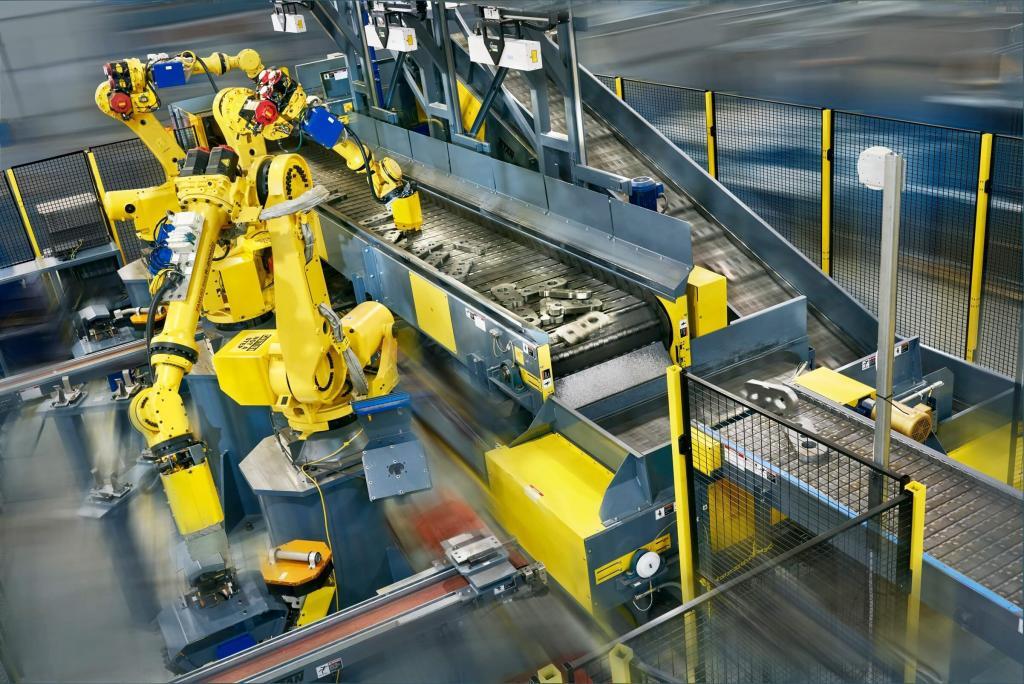
Automation becoming required strategy for success
“Organizations should evaluate their operations to embrace the significant changes in technology and automation as they relate to their customers as well as to their own businesses.”
-2016 Material Handling Equipment Distributors Association (MHEDA) #1 Critical Impact Factor.
For two years in a row, the #1 critical factor from MHEDA defines industrial automation systems as a necessary strategy for maximizing success. This doesn’t just apply to material handling organizations, research across industries demonstrates efficiency and productivity to be gained through automation. “Automation isn’t new,” says Mitch Hushak, lead engineer at RMH Systems, “but the sophistication of the equipment is increasingly complex. The efficiencies that companies can realize, both on the operation line and bottom line, are very real.” Recent research shows that robotic system integration and shipments in North America set new records during the first three quarters of 2014, accounting for an increase of 35% in units and 22% in dollars over the same period in 2013. Preliminary numbers present a similar increase in 2015.
Cost is the primary driver for the automation movement. While the costs of robotics, vision systems, conveyors, etc. are declining or remaining static, almost all other costs—labor, land, energy—are rising. A study from the University of Oxford indicates that 47% of American jobs are at high risk of being automated in years to come. Industrial robots deliver something that humans cannot: near-perfect consistency with extremely limited variability in performance. Robots don’t get sick, don’t get hurt, and don’t need breaks. The push is strengthened by the country’s significant shortage of skilled labor. The Manufacturing Institute estimates this shortage creates a reduction in annual earnings of up to 11% through increased production costs, overtime, quality assurance, and customer dissatisfaction. RMH Systems recently worked with a privately owned ham processor in Nebraska to implement automated solutions that cut production costs by 40%, which goes a long way in a competitive market.
While this rhetoric suggests that replacing human capital may be the solution, the intention is to spur discussion on creative solutions that more efficiently pair automation and labor. Some industry experts look at automation as “dooming” the American manufacturing workforce citing the 10-year 17% decrease in manufacturing jobs, and simultaneous 5% drop in mean wages. However, couldn’t this be an opportunity? Companies that can automate the repetitive heavy-lifting can then re-deploy their workers to other more skilled labor tasks. Re-deployment creates opportunity for labor forces to build their skill sets, be involved in more desirable work, and potentially allow executives to increase the wages they are able to pay their more skilled workforce.
Common misconceptions are that automation requires hundreds of thousands of dollars, and starting from scratch. RMH Systems can design an affordable solution that can be built into your existing lines. RMH is a systems house with in-house expertise to help companies think through their system design and automation plans. “We can create true turnkey systems for customers with our material handling, packaging, controls, and engineering expertise. Not many other companies can do that,” says Mitch Hushak. This is not simply a decision to buy a robot or to add a piece of equipment, but to develop a solution to make your workspaces more efficient and safe. Together we can earn back that 11% by making your production lines more efficient than ever. 11% over two years could easily provide a positive ROI in a very quick timeframe. The key is to start the conversation because there’s no doubt about it: automation and robotics in the manufacturing sector are here to stay.